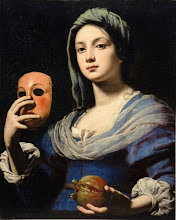"We are our narratives" has become a popular slogan. "We" refers to our selves, in the full-blooded person-constituting sense. "Narratives" refers to the stories we tell about our selves and our exploits in settings as trivial as cocktail parties and as serious as intimate discussions with loved ones. We express some in speech. Others we tell silently to ourselves, in that constant little inner voice. The full collection of one's internal and external narratives generates the self we are intimately acquainted with. Our narrative selves continually unfold.
State-of-the-art neuro-imaging and cognitive neuropsychology both uphold the idea that we create our "selves" through narrative. Based on a half-century's research on "split-brain" patients, neuroscientist Michael Gazzaniga argues that the human brain's left hemisphere is specialised for intelligent behaviour and hypothesis formation. It also possesses the unique capacity to interpret - that is, narrate - behaviours and emotional states initiated by either hemisphere. Not surprisingly, the left hemisphere is also the language hemisphere, with specialised cortical regions for producing, interpreting and understanding speech. It is also the hemisphere that produces narratives.
Gazzaniga also thinks that this left-hemisphere "interpreter" creates the unified feeling of an autobiographical, personal, unique self. "The interpreter sustains a running narrative of our actions, emotions, thoughts, and dreams. The interpreter is the glue that keeps our story unified, and creates our sense of being a coherent, rational agent. To our bag of individual instincts it brings theories about our lives. These narratives of our past behaviour seep into our awareness and give us an autobiography," he writes. The language areas of the left hemisphere are well placed to carry out these tasks.
Full article at New Scientist
Shri Mataji Nirmala Devi has identified the left hemisphere of the brain as the area of the subtle body in which the ahamkara (ego) accumulates.
Which comes first, the chicken or the egg? The narrator or the ego?
Drawing Hands is a lithograph by the Dutch artist M. C. Escher first printed in January 1948. It depicts a sheet of paper out of which rise, from wrists that remain flat on the page, two hands, facing each other and in the paradoxical act of drawing one another into existence. Although Escher used paradoxes in his works often, this is one of the most obvious examples.
The lithograph may signify mutual constitution; that is, the principle of one entity being formed by the other and vice versa (e.g., the state vs. the demos, predator–prey co-evolution, the subject and objects, "chicken or the egg?", agency-structure).
It is referenced in the book Gödel, Escher, Bach by Douglas Hofstadter, who calls it an example of a strange loop.




















No comments:
Post a Comment